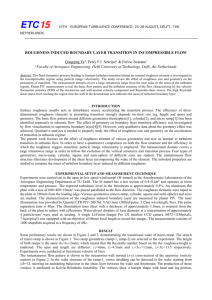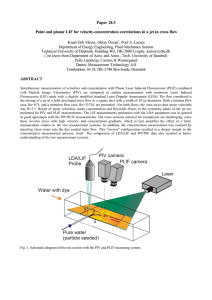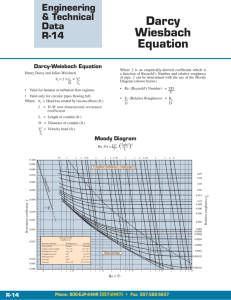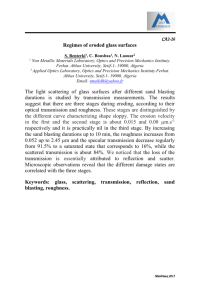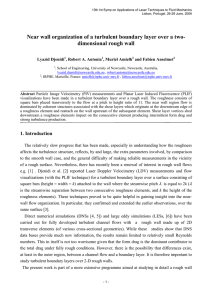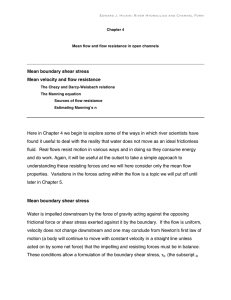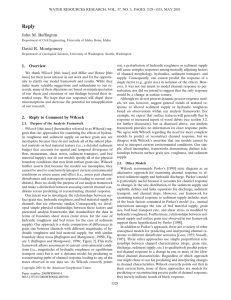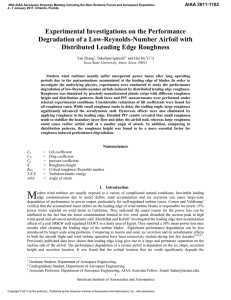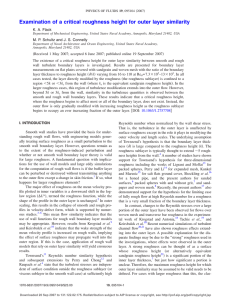Near-wall organization of a turbulent boundary layer over a two-dimensional... Lyazid Djenidi , Robert A. Antonia , Muriel Amielh
advertisement
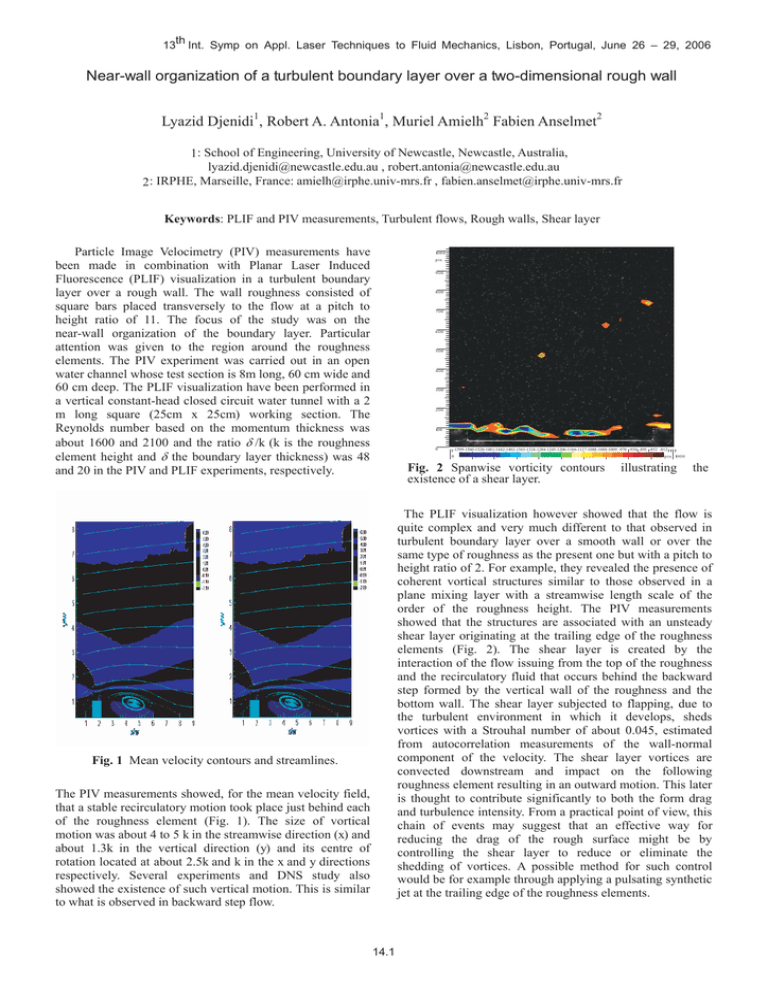
13th Int. Symp on Appl. Laser Techniques to Fluid Mechanics, Lisbon, Portugal, June 26 – 29, 2006 Near-wall organization of a turbulent boundary layer over a two-dimensional rough wall Lyazid Djenidi1, Robert A. Antonia1, Muriel Amielh2 Fabien Anselmet2 1: School of Engineering, University of Newcastle, Newcastle, Australia, lyazid.djenidi@newcastle.edu.au , robert.antonia@newcastle.edu.au 2: IRPHE, Marseille, France: amielh@irphe.univ-mrs.fr , fabien.anselmet@irphe.univ-mrs.fr Keywords: PLIF and PIV measurements, Turbulent flows, Rough walls, Shear layer Particle Image Velocimetry (PIV) measurements have been made in combination with Planar Laser Induced Fluorescence (PLIF) visualization in a turbulent boundary layer over a rough wall. The wall roughness consisted of square bars placed transversely to the flow at a pitch to height ratio of 11. The focus of the study was on the near-wall organization of the boundary layer. Particular attention was given to the region around the roughness elements. The PIV experiment was carried out in an open water channel whose test section is 8m long, 60 cm wide and 60 cm deep. The PLIF visualization have been performed in a vertical constant-head closed circuit water tunnel with a 2 m long square (25cm x 25cm) working section. The Reynolds number based on the momentum thickness was about 1600 and 2100 and the ratio δ /k (k is the roughness element height and δ the boundary layer thickness) was 48 and 20 in the PIV and PLIF experiments, respectively. 1000 pix 900 800 700 600 500 400 300 200 100 0 -1599-1560-1520-1481-1442-1402-1363-1324-1284-1245-1206-1166-1127-1088-1048-1009 -970 -930 -891 -852 -812 0 100 200 300 400 500 600 Fig. 2 Spanwise vorticity contours existence of a shear layer. 700 800 900 pix 1000 illustrating the The PLIF visualization however showed that the flow is quite complex and very much different to that observed in turbulent boundary layer over a smooth wall or over the same type of roughness as the present one but with a pitch to height ratio of 2. For example, they revealed the presence of coherent vortical structures similar to those observed in a plane mixing layer with a streamwise length scale of the order of the roughness height. The PIV measurements showed that the structures are associated with an unsteady shear layer originating at the trailing edge of the roughness elements (Fig. 2). The shear layer is created by the interaction of the flow issuing from the top of the roughness and the recirculatory fluid that occurs behind the backward step formed by the vertical wall of the roughness and the bottom wall. The shear layer subjected to flapping, due to the turbulent environment in which it develops, sheds vortices with a Strouhal number of about 0.045, estimated from autocorrelation measurements of the wall-normal component of the velocity. The shear layer vortices are convected downstream and impact on the following roughness element resulting in an outward motion. This later is thought to contribute significantly to both the form drag and turbulence intensity. From a practical point of view, this chain of events may suggest that an effective way for reducing the drag of the rough surface might be by controlling the shear layer to reduce or eliminate the shedding of vortices. A possible method for such control would be for example through applying a pulsating synthetic jet at the trailing edge of the roughness elements. Fig. 1 Mean velocity contours and streamlines. The PIV measurements showed, for the mean velocity field, that a stable recirculatory motion took place just behind each of the roughness element (Fig. 1). The size of vortical motion was about 4 to 5 k in the streamwise direction (x) and about 1.3k in the vertical direction (y) and its centre of rotation located at about 2.5k and k in the x and y directions respectively. Several experiments and DNS study also showed the existence of such vertical motion. This is similar to what is observed in backward step flow. 14.1
